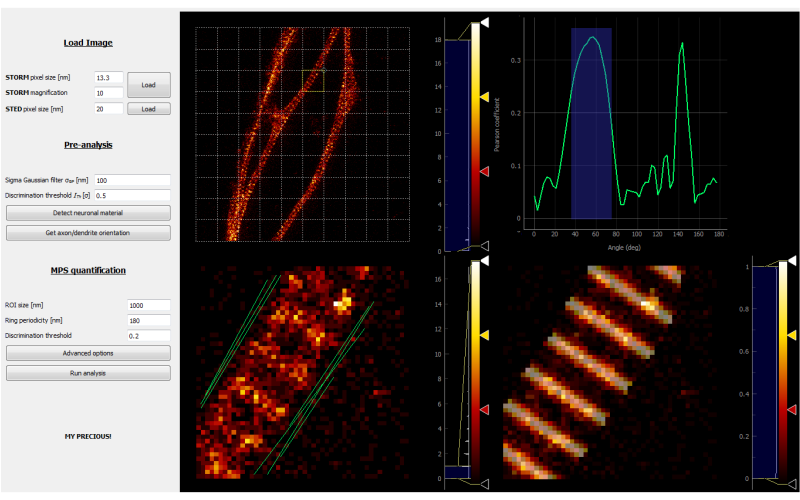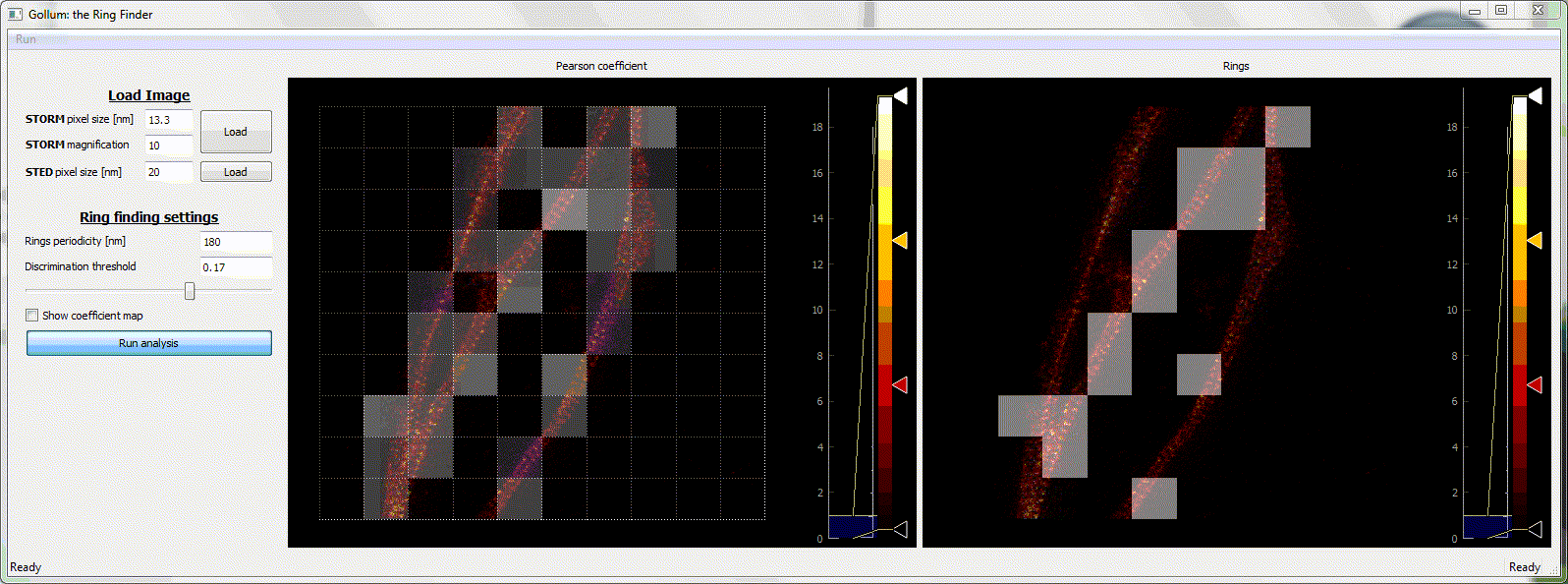Automated quantification of periodical structures.
Motivation
Proteins frequently function in the form of regular or periodic, self-assembled structures, with typical sizes in the range of tens of nanometers. New microscopy techniques enabled the visualization of such protein periodic structures in their natural environment. An example, first observed in 2013, is the alternating ring-like structure of actin and spectrin, wrapped around axons and repeated along them with a periodicity of around 190 nm.
So far, quantitative analysis of these structures has been done with correlation analysis with manual region selection, so there is a risk of introducing subjective bias. Plus, because such a task is time-consuming, only a small sample size can be analyzed, limiting the statistical relevance of results. Quantitative studies call for automated image analysis tools that overcome these two major drawbacks. Since the function of the structure is not clear, a significant amount of work is still necessary.
Gollum
With this in mind we developed a method and its implementation as an open-source image analysis tool for the automated quantification of the abundance and quality of protein periodic structures in images of biological samples. Since its purpose is to find the spectrin rings, we named the software Gollum. It works by systematically interrogate the presence of the structure in images, by comparing subregions of the images to a reference pattern by means of their Pearson coefficient.
We validated its performance by an examination of the periodical structure in neurons at different developmental stages. Our results match previous reports, this time with a quantitative unbiased approach.


Resources
The software description and validation was published in the paper: Barabas, Masullo, et al., Automated quantification of protein periodic nanostructures in fluorescence nanoscopy images: abundance and regularity of neuronal spectrin membrane-associated skeleton, Scientific Reports, 2017 (Link)
The code is hosted at this GitHub repository